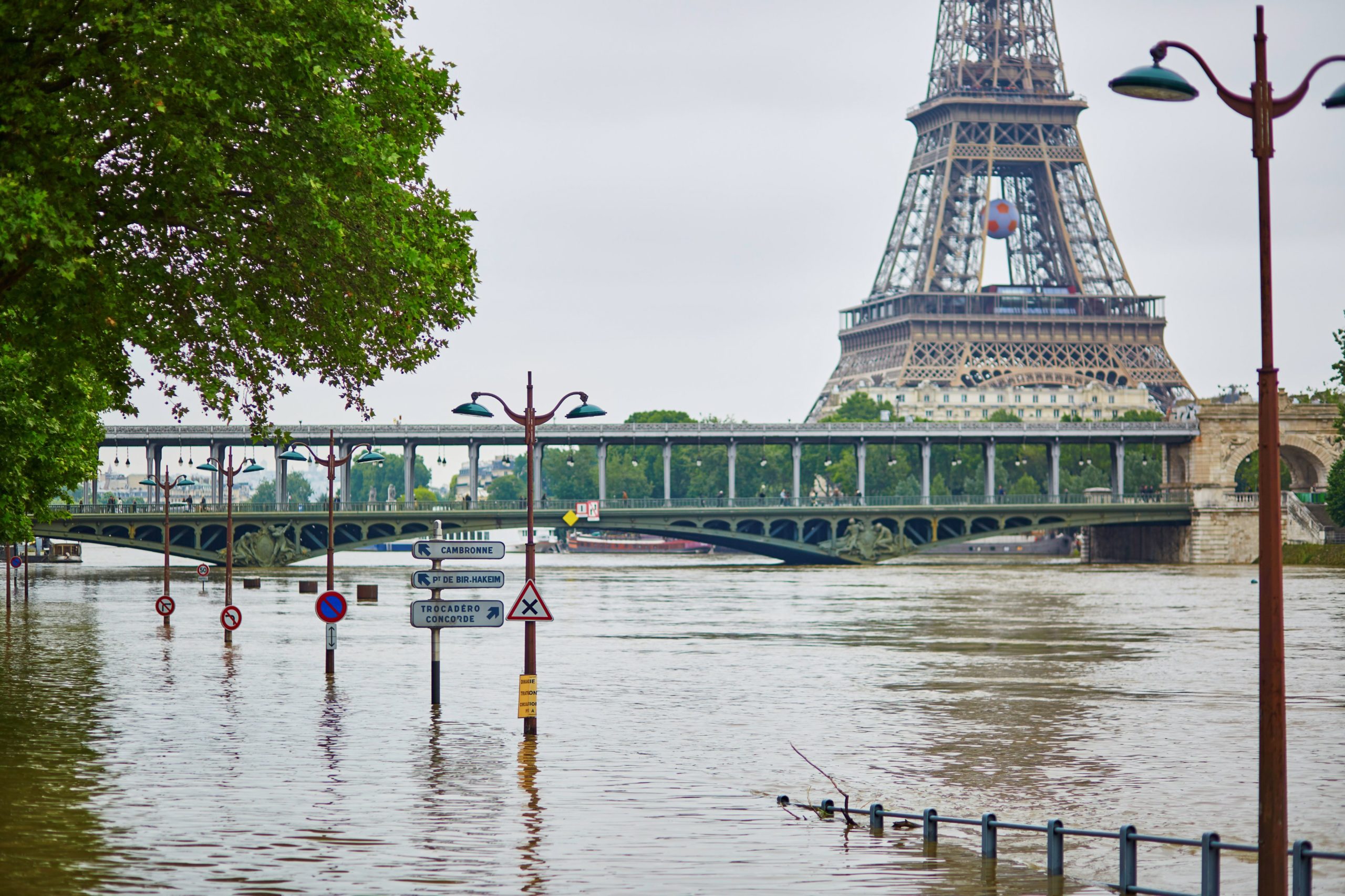Parisian history is filled with incredible moments that have shaped and defined France and the world in cultural and political ways, but one little known moment in the city’s history occurred on January 21st of 1910 when the Seine river overflowed and flooded the streets of Paris. While the sight of boats floating gracefully through city streets may conjure images of Venice and of Gondolas, for about a month in 1910 this was a common sight in Paris, too.
While floods were not uncommon in the city during winter, heavier than average rainfall in northern France caused the Seine River’s tributaries to fill up completely in January of 1910. As the Seine began to rise quickly, panic began to sweep through the streets of Paris. The river would eventually reach a height of 8.62 meters at its height over the course of the next several days. City employees sprung to action to build levees in an effort to prevent the flood from bursting the city’s banks. Unfortunately, those outside of the city in the suburbs to the east and west did suffer major flooding when the river rose above the banks in those areas. Meanwhile, emergency personnel scrambled to render aid to citizens and rescue those who found themselves stranded inside their homes by navigating the streets in boats and evacuating them through second-story windows. Make-shift shelters were erected in churches and schools to care for Paris’s homeless population while bridges were hastily built throughout the city to make getting around possible; many simply traveled through the flooded streets in boats until the water finally subsided completely more than a month later.
Since this notable day in 1910, the Seine River has nearly flooded the city again several times including in the years 1924, 1955, 1982, and most recently in the year 2000, prompting the government of France to report on the possibility of another such flood, which would leave today’s Parisians without utilities especially necessary in the cold months such as gas and electricity. Many have voiced concerns that the city would not be prepared in the event of another such flood, and these concerns are further fueled by concerns about the ways that climate change may impact the likelihood of an event like this occurring today. Europe has experienced many drastic changes in weather throughout its seasons, which makes it all the more important for Parisians to look to the past in order to prevent history from repeating itself.




